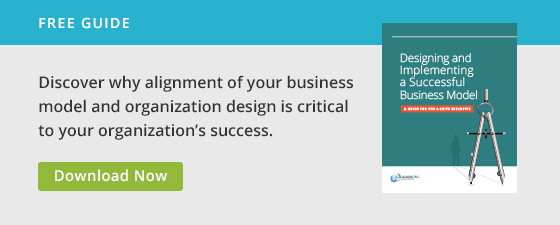A recent survey of 246 CEOs worldwide found that 64% believe innovation and operational effectiveness carry equal importance for their companies’ success. More than half stated that innovation was a priority and they were adept at generating new ideas and approaches.
We recently worked with a large company’s research and development (R&D) group. Their mission was to bring innovative products to market that could capture significant share. When asked about the source and direction of the necessary innovation, half of the group believed innovation should be driven by what the market wanted and expected.
The other half of the group, however, were convinced that their customers didn’t know what they wanted—it was up to the R&D group to find the innovations that they didn’t know they needed. Unfortunately, this “innovation-for-the-sake-of-innovation” way of thinking has a downside. Why? Because even if an organization can find an innovation that beats the odds, sustaining that innovation can be difficult.
The reality is that successful innovation requires a mix of responding to customer needs and finding breakthrough innovations. An innovation strategy must align with your overall strategic business planning and how you intend to differentiate. So before you start innovating for the sake of it, you need to seriously consider how it fits with strategy. Ask the right questions, and the answers will help create a well-aligned innovation strategy.
Asking Questions, Creating Strategy
Let’s explore those questions. Remember, there is no right or wrong answer. It all depends on the organization:
- Can you align your innovation efforts with the rest of the organization? Be wary if the answer to this question is “No.” A separate strategy for innovation can derail your current, working business strategy. Misaligned innovation objectives compromise the overall clarity of organizational objectives and priorities, even current efforts. It is better to be sure any innovation will align well.
- What capabilities do you need to innovate? To be effective, you have to be an expert in the area of innovation. It sounds simple, but many companies head down the innovation path without the requisite capabilities. Spend some time and thought on the issue of resourcing for the right capabilities.
- Do you have enough of the right resources? Remember, you’ll need to keep working on current opportunities while exploring new innovations. If you’re resource-starved, delve deep to figure out where you can free up what you need without comprising the ongoing business.
- Are you agile enough to compete? To gain a competitive advantage, you must stay agile and develop solutions rapidly, even if they are incomplete. Focus your strategy on what is needed to get to market quickly (otherwise, you’ll miss competitive opportunities). Customers can receive real-time updates as you work out the kinks.
- What are your market goals? Innovation should be structured around creating value—for your organization and for customers. The intention behind the innovation will determine whether your capabilities can rise to the occasion. If your intention is to create value for the customer, be sure to observe customer needs or wants before implementing an innovation strategy. Don’t rely solely on post-market feedback.
- Can you differentiate yourself from the competition? Again, the answer to this question will determine whether your organization is capable of sustaining its innovation efforts. If the innovation will differentiate you from your competitors, be sure the other aspects of your organization align to your innovation capabilities and strategy.
- Most important, are you prepared to put yourself out of business? Innovation is risky. And there are no guarantees. True innovators are willing to make their products, offerings or organization obsolete. It takes strategic courage to potentially undermine the success you are achieving today.
Following through on Strategy
Every organization must make tough choices if it is to be a success. Embarking on an innovation strategy is no different. There is no shortage of hard-fought tradeoffs. You need to know your customer and understand your organization’s capabilities. You also must find a healthy balance between customers’ needs and your ability to meet those needs creatively.
Make informed decisions when considering whether to forge ahead. You may find that innovation is not the best use of your resources or the best approach in your strategic business planning.
But if you decide on innovation, make sure you follow through.






